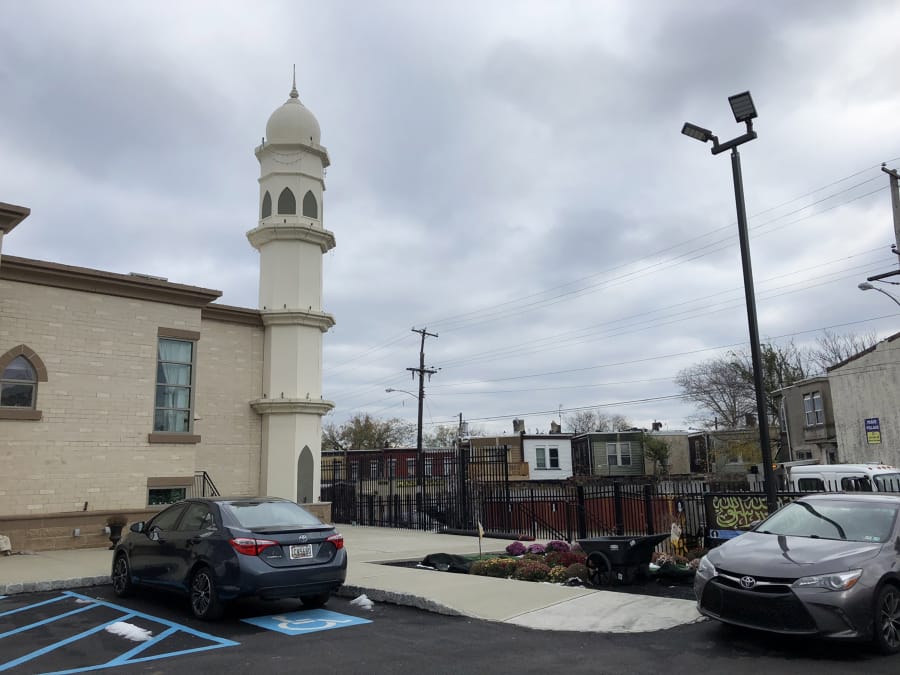Ever since 9/11, American Muslims have struggled with whether they should stay under the radar or assert their identity. Despite the discrimination that has risen to the surface since that terrible day, their ranks in the U.S. have grown substantially, and there are twice as many mosques operating today as there were in 2000. Yet the majority of those new sanctuaries have burrowed into existing buildings — former churches, synagogues, movie theaters, and storefronts.
Because they’re so understated, you might never guess that there are now more than 40 mosques in Philadelphia serving some 200,000 Muslims. Most operate in buildings that don’t include any traditional Islamic architectural features on the outside, apart from a touch of green paint or decorative tilework.
That situation changed in October when a group of Ahmadi Muslims dedicated the city’s first purpose-built mosque on a skinny plot of land off Broad Street in North Philadelphia. Its pointed arched windows and modest central dome hint at its purpose. But the 55-foot minaret on Glenwood Avenue confirms it. The slender, buff-colored tower stands tall over the adjacent rowhouse neighborhood, a proud and soaring thing to use Louis Sullivan’s famous phrase. It is Philadelphia’s first minaret, the Ahmadis say, and declares that they have arrived.
Building a statement sanctuary has been a rite of passage for nearly every religious group that has settled here since William Penn welcomed people of all faiths to Philadelphia in the 1680s. Catholics laid the cornerstone for the Cathedral Basilica of SS. Peter and Paul in 1846, when hostility against the religion was at its most fierce. The city’s Jews telegraphed their growing numbers in 1872 by building the Furness-designed Rodeph Shalom on North Broad Street. And two years ago, the Mormons completed a lavish temple compound off Logan Square.



